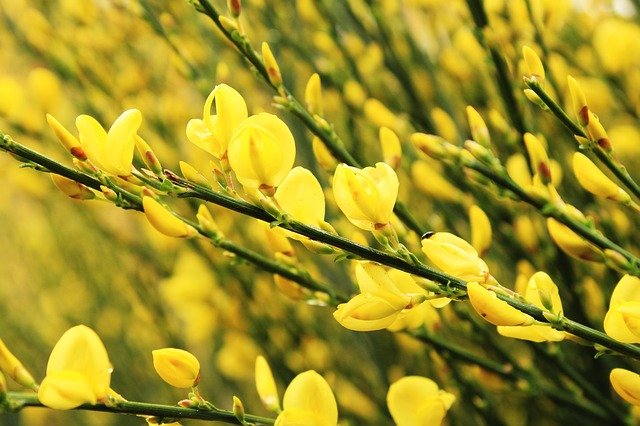
Broom (Cytisus scoparius) is a plant of the Papilionaceae legume family. With an important sedative, laxative and vasoconstrictor action, it is useful for purifying the body and regulating the heart rate. Let’s find out more.
Properties of Broom
The following medicinal properties are attributed to broom:
- Antiarrhythmic: regulates the action of the heart;
- Antirheumatic: relieves pain due to inflammation of the joints;
- Cardiotonics – regulates heart rate;
- Cathartic: generic properties of purification of the organism;
- Diuretic– facilitates the release of urine;
- Emetics – useful in case of poisoning as it causes vomiting;
- Vasoconstrictor: narrows the blood vessels increasing their pressure.
Broom contains a salt, spartein, responsible for the tonic action for the heart, scoparin, responsible for diuretic action, and other components such as cytisine, scoparol, genistenin, lutein, tannic and caffeic acid and sarotamine.
In addition, sugars, gums, palmitic acid, paraffin and furfural are also present.
Through the distillation process, from the flowers of the broom is obtained the essential oil that is used in natural cosmetics for the production of perfumes. In addition, from the extract of the flowers of the broom is obtained a homeopathic remedy useful for the health of the kidneys.
How to use
Of the broom are used:
- freshly hatched flowers, with which a diuretic infusion useful against hydropsy is made;
- seeds, which contain the same active ingredients as flowers.
It is always recommended to use broom in moderation because of its toxicity.
Contraindications of broom
Broom contains tyramine, not suitable in case of hypertension. Among the side effects of broom, mostly due to excessive doses, we have:
- vomiting;
- diarrhoea.
Avoid taking this plant during pregnancy and lactation, and in case of infection or inflammation of the kidneys.
Description of the plant
The Broom (Cytisus scoparius) belongs to the family of Papilionaceae Legumes. It is a bushy shrub plant, which can have an erect or ascending posture. Usually it does not exceed two meters in height.
The branches of the broom are hairless and flexible, the roots very intricate, the leaves are deciduous and the flowers of a beautiful intense yellow color.
The fruit of the broom is a legume that when ripe takes on a blackish color. Contains 8-12 seeds, small and black.
Habitat of the Broom
It is a plant native to Europe, especially in the western part, where temperatures are not too cold. It grows in uncultivated and arid places, well sunny, on the hills or on the edge of the airy woods.
Background

The brooms were already known and appreciated in the past by the Romans and Greeks who cultivated them to attract bees for the production of honey.
The broom has been classified as Cytius scoparius in reference to the traditional use that was made of the branches of this shrub, that is to be tied together and to be used as a broom. A use that was made above all for the cleaning of chimneys, so much so that the plant is also known by the name of broom of charcoal burners.
The flowering branches, on the other hand, were used at home for ornamental purposes during Pentecost.






